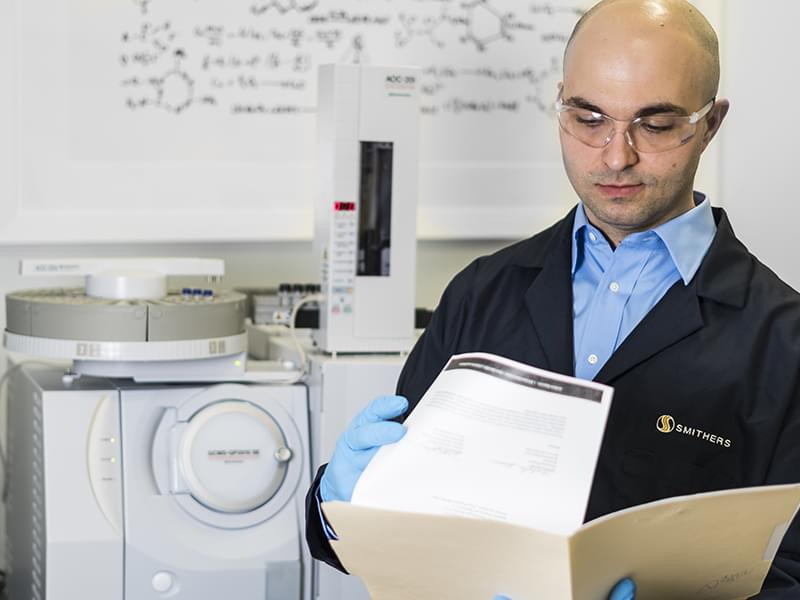Dustin Jenkins, Ph.D., our lab supervisor, discusses how chromatography techniques can help Smithers clients create better products. For a deep dive into chromatography,
watch our six-minute video >
What is chromatography?
Chromatography is an analytical technique that allows for the separation and identification of complex mixtures. For example, a compounded rubber product is made up of dozens of chemical components. In addition to the polymer itself, you’ll find cure systems, antidegradant packages, fillers, and plasticizers, just to name a few. Chromatography, especially when it’s coupled with mass spectrometry, enables you to pick apart and identify all those components or “ingredients.”
What is chromatography used for? How can it help me?
Chromatography has a number of uses, but there are three major applications in our lab:
- Formula reconstruction is another term for reverse engineering. For example, a client could bring us a competitive product, and we could use chromatography to identify all the materials that comprise it. Clients could potentially use information to improve their own products and increase their market share.
- Failure analysis is fairly self explanatory. Essentially, if a product fails to perform in the field, we can use chromatographic techniques to determine whether something in the material itself — such as an impurity — may have caused the issue.
- Raw materials assay is a technique for measuring purity. Let’s say a client is mixing a new rubber compound in-house that includes a new antioxidant. We can use one of our chromatography instruments to qualify the purity of that antioxidant or another raw material. Raw materials assay can also help determine whether purity of a particular raw material is contributing to any performance issues.
What kinds of products have you worked with?
We’ve seen a huge variety of products come through our chromatography lab here in Akron:
seals and o-rings, plastic tabs, and personal care products, to name a few. Smithers has nearly 100 years of experience serving
the tire industry, so of course we work with a lot of tire components, such as treads, sidewalls, and liners. Really, the sky’s the limit: we can work with virtually any compounded rubber or plastic material.
What’s the difference between GCMS and HPLC?
In practical terms, the kinds of analytes that can be targeted with each method. High performance liquid chromatography (HPLC) uses liquid solvent as a carrier medium and operates at lower temperatures. Therefore, it is better suited for the analysis of less volatile compounds. Gas chromatography-mass spectrometry (GC-MS) uses gas as a carrier medium and much higher temperatures and so is more applicable to analytes with higher volatility and less proclivity towards degradation.
Tell us about the Smithers chromatography lab.
Smithers upgraded to state-of-the-art GCMS and HPLC instrumentation and expanded the chromatography lab’s footprint a few years ago, and we’re already planning to add more capacity. We strive to give our clients the highest quality data possible, and all of our investment decisions are made with that goal in mind.

